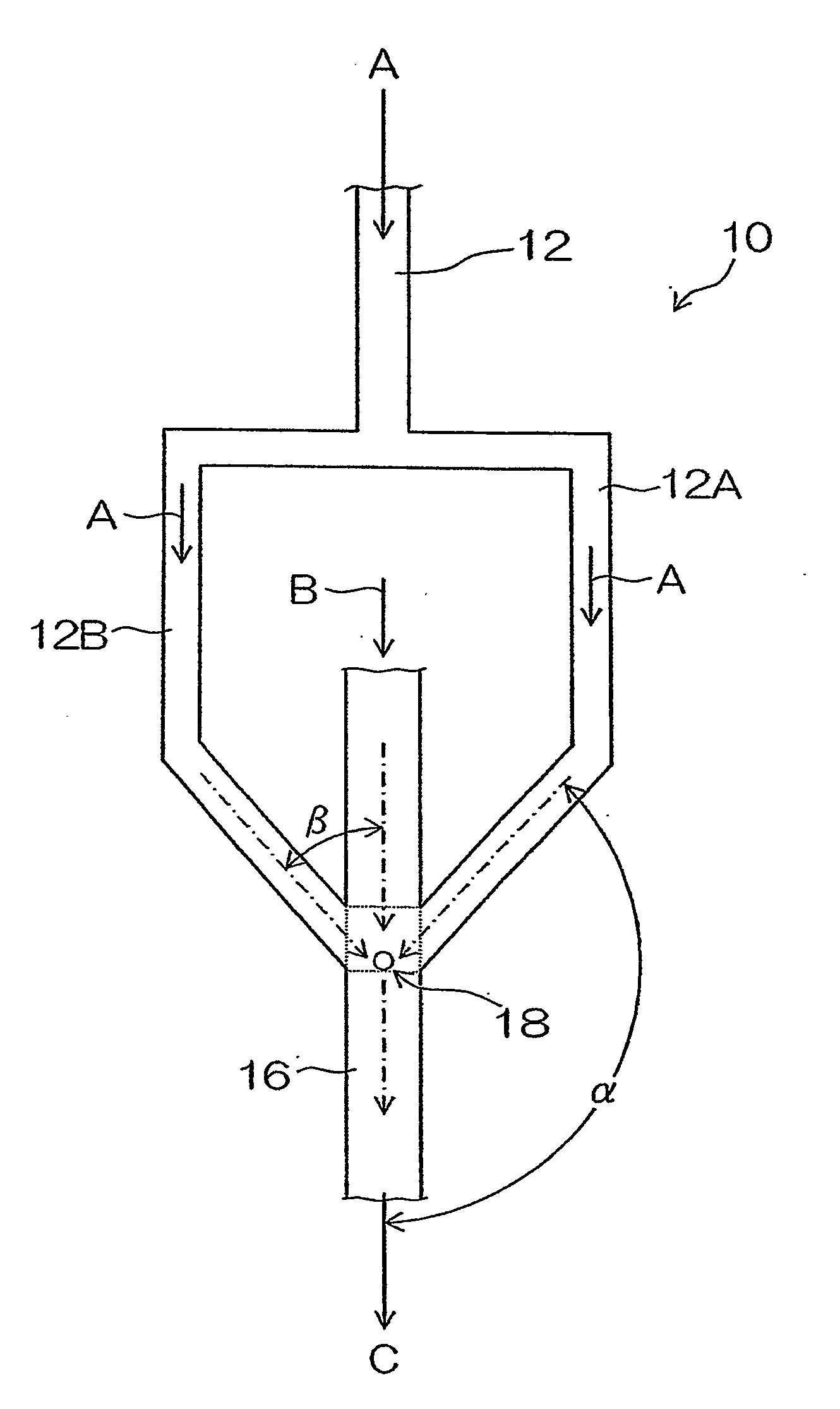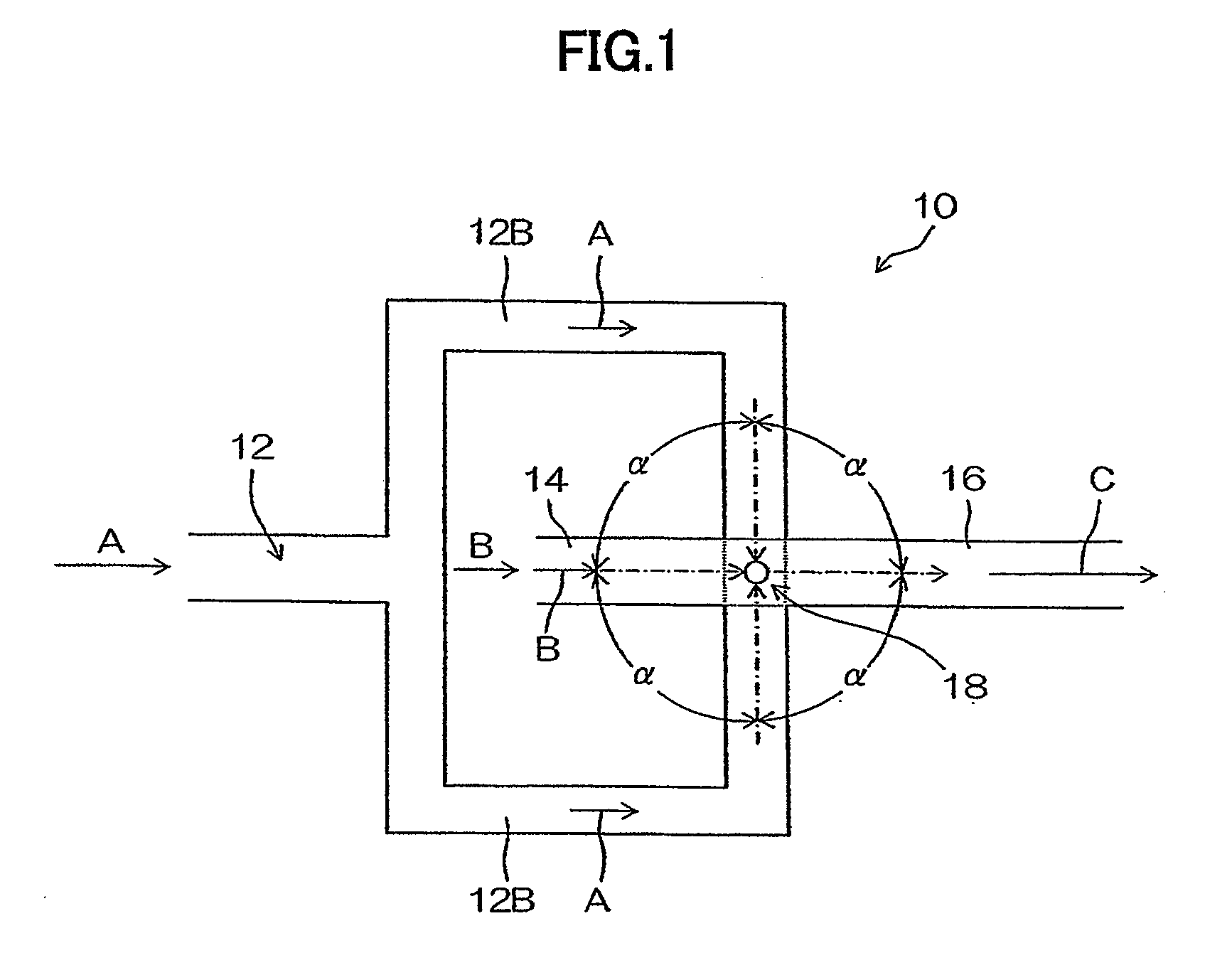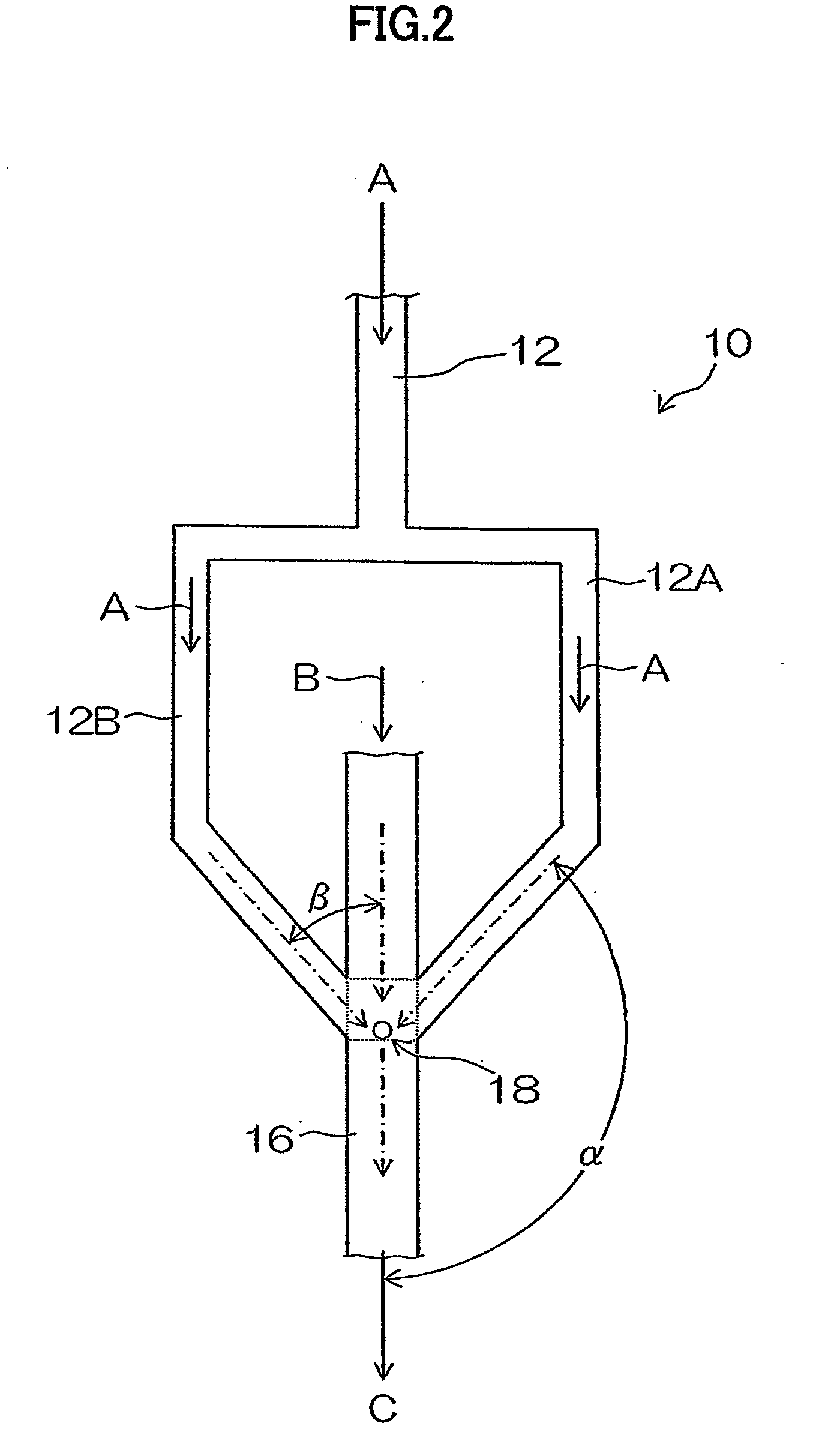Organic pigment fine particles and method of producing the same
a technology of organic pigments and fine particles, applied in the field of organic pigment fine particles, can solve the problems of poor adhesion of pigment ink to paper, water resistance and light resistance, formation of uniform fine particles of pigment ink of a nanometer, etc., and achieve excellent monodispersibility
- Summary
- Abstract
- Description
- Claims
- Application Information
AI Technical Summary
Benefits of technology
Problems solved by technology
Method used
Image
Examples
example 1
[0152]In Example 1, organic pigment fine particles of Pigment Red 122 (C. I. No. 73915) were produced.
[0153]A pH was measured by pH meter F-54 (measurement range pH 0 to 14) from HORIBA, Ltd. A particle size distribution of the produced organic pigment fine particles was measured by Nanotrac UPA-EX 150 from NIKKISO CO., LTD.
[0154]An organic pigment solution B and a pH adjustor solution A were prepared as follows:
(1) Organic pigment solution B[0155]2,9-Dimethylquinacridone . . . 7.5 g[0156]Dispersant polyvinylpyrrolidone (from Wako Pure Chemical Industries, Ltd., K30) . . . 37.5 g[0157]Aqueous solution of 0.8 M potassium hydroxide . . . 83 mL[0158]Dimethylsulfoxide (DMSO) . . . 568 mL
[0159]The above components were sufficiently mixed under stirring and dissolved completely at room temperature. Then, this solution was passed through a 0.45 μm microfilter to remove impurities such as debris. The pH of the organic pigment solution thus prepared exceeded the measurement limit (pH 14), an...
example 2
[0168]In Example 2, organic pigment fine particles of Pigment Yellow 128 (C. I. No. 20037) were produced.
[0169]The particle size distribution of Example 2 was measured by a dynamic light scattering particle size distribution meter (LB-550) from HORIBA, Ltd.
(1) Organic pigment solution B[0170]Pigment (P. Y. 128). 1.25 g[0171]Dispersant polyvinylpyrrolidone (from Wako Pure Chemical Industries, Ltd., K30) . . . 1.25 g[0172]Aqueous solution of 1 M potassium hydroxide . . . 6.0 mL[0173]Dimethylsulfoxide (DMSO) . . . 82 mL
[0174]The above components were sufficiently mixed under stirring and dissolved completely at room temperature. This solution was clear and yellow-brown. Then, this solution was passed through a 0.45 μm microfilter to remove impurities such as debris.
(2) pH adjustor solution A[0175]Dispersant oleylmethyl taurine sodium salt . . . 10 g[0176]Distilled water . . . 990 g
[0177]The above components were sufficiently mixed under stirring and dissolved completely at room tempera...
example 3
[0182]In Example 3, changes of a particle size of produced organic pigment fine particles (Pigment Yellow 74 (C. I. No. 11714)) by changing a shear rate (U / R) in a microchannel 16 were tested.
[0183]The particle size distribution of Example 3 was measured by a dynamic light scattering particle size distribution meter (LB-550) from HORIBA, Ltd.
(1) Organic pigment solution B[0184]Pigment (P. Y. 74) . . . 1.2 g[0185]Dispersant polyvinylpyrrolidone (from Wako Pure Chemical Industries, Ltd., K30) . . . 6.0 g[0186]Aqueous solution of 1 M potassium hydroxide . . . 3.8 mL[0187]Dimethylsulfoxide (DMSO) . . . 109 mL
[0188]The above components were sufficiently mixed under stirring and dissolved completely at room temperature. This solution was red-brown. Then, this solution was passed through a 0.45 μm microfilter to remove impurities such as debris.
(2) pH adjustor solution A[0189]Dispersant oleylmethyl taurine sodium salt . . . 10 g[0190]Distilled water . . . 990 g
[0191]The above components we...
PUM
| Property | Measurement | Unit |
|---|---|---|
| diameter | aaaaa | aaaaa |
| time | aaaaa | aaaaa |
| diameter | aaaaa | aaaaa |
Abstract
Description
Claims
Application Information
 Login to view more
Login to view more - R&D Engineer
- R&D Manager
- IP Professional
- Industry Leading Data Capabilities
- Powerful AI technology
- Patent DNA Extraction
Browse by: Latest US Patents, China's latest patents, Technical Efficacy Thesaurus, Application Domain, Technology Topic.
© 2024 PatSnap. All rights reserved.Legal|Privacy policy|Modern Slavery Act Transparency Statement|Sitemap



